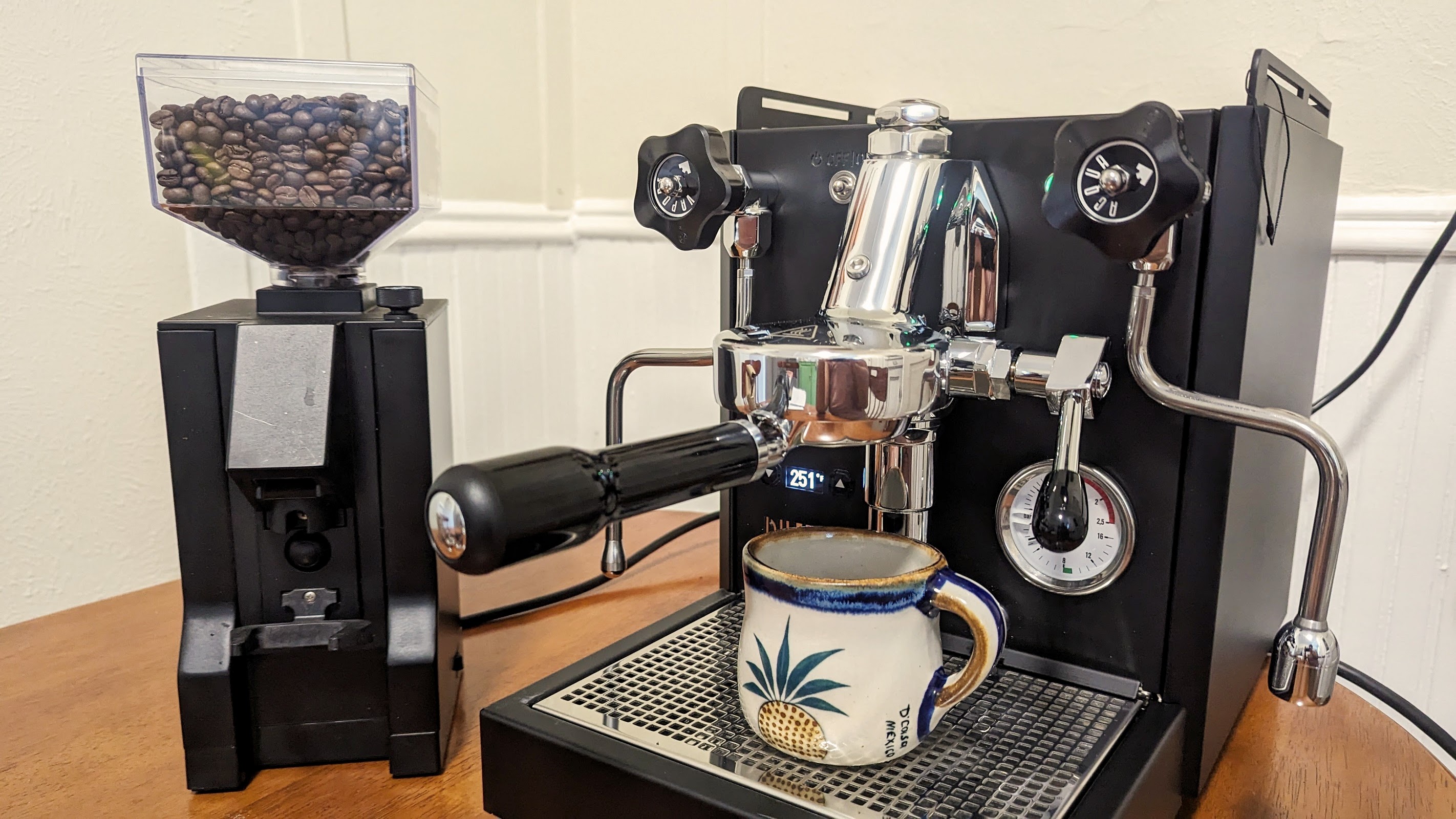
If you're a coffee lover there are few drinks that make you feel as cosy and warm as a cappuccino. Espressos and americanos are strong in coffee flavor, lattes are sweet and milky, yet cappuccinos provide an almost perfect balance of the two – combining coffee richness with a creamy texture.
- Cup
- Milk
- Chocolate shavings or cocoa powder for garnish (optional)
- Espresso machine: I used the Smeg Espresso Maker to make the cappuccinos in this guide but my favorite espresso machine is the Breville Infuser BES840X.
- Coffee beans: You can also use coffee grounds.
- Grinder: Opt for conical burr grinders for extra precision. Espresso machines like the De'Longhi La Specialista Arte Evo and Smeg Espresso Manual Coffee Machine. have built-in grinders, or you can buy standalone grinders like the Krups Precise Stainless Steel Flat Burr Grinder.
- Steam wand
- Milk frother: The steam wands on espresso machines froth milk or you can buy a standalone milk frother like the $16.99 Bean Envy Handheld Milk Frother.
You don't need to go to a coffee shop to enjoy one, though. From my experience in testing the best espresso machines, it is possible to make barista-style cappuccinos at home with relative ease – it just takes a bit of practice.
In this guide, I'll walk you through how to make a cappuccino with an espresso machine. I've also spoken to barista trainer Jon Skinner to learn more about the art of cappuccino making, and to get tips and tricks from the trade.
If you're yet to buy an espresso machine, or you're looking to upgrade, we've recently explained how to choose a coffee maker.
Quick steps for how to make a cappuccino
- Brew the espresso
- Steam and froth the milk
- Combine espresso and frothed milk
- Sprinkle with chocolate powder (optional)
Step by step guide: How to make a cappuccino
1. Brew the espresso shot
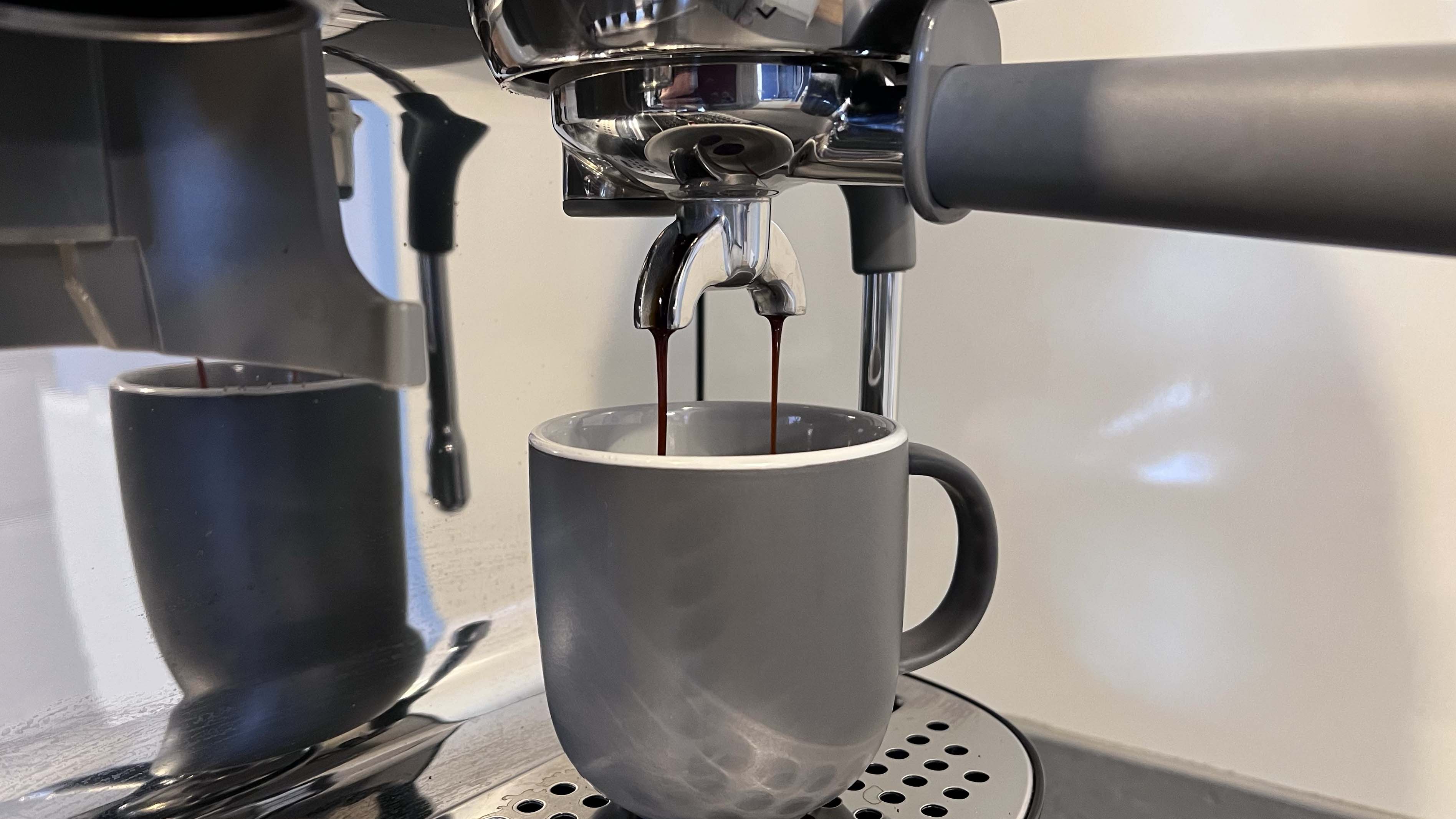
The best espresso shot for a cappuccino is one that is strong enough in flavor to not be overpowered by the milk, but isn't so strong that it takes away from the milk's sweetness.
I recommend dark-roasted beans, especially those from Italy because they have a robust, slightly bitter flavor that balances with the creamy milk and chocolate sprinkles. You can alternatively use coffee grounds, but the same flavor profile applies.
Once you've chosen your beans, you'll need to spend some time getting the grind size right. According to Skinner, "the optimal grind size will produce an espresso that is dark in color, takes around 25 seconds to pull, and has a thin layer of crema on the top."
You may have to pull a couple of shots the first time you add new beans to your machine, to find the best grind size. You can also use the pressure gauge on the front of your machine to determine if your grind size is correct. If, as the espresso is poured, the dial moves towards the center of the gauge - you're in the right ballpark. If it lifts and falls back to the beginning, or swings to the end, you have too little, or too much pressure. You can then adjust the grind to see what impact it makes.
2. Steam and froth the milk
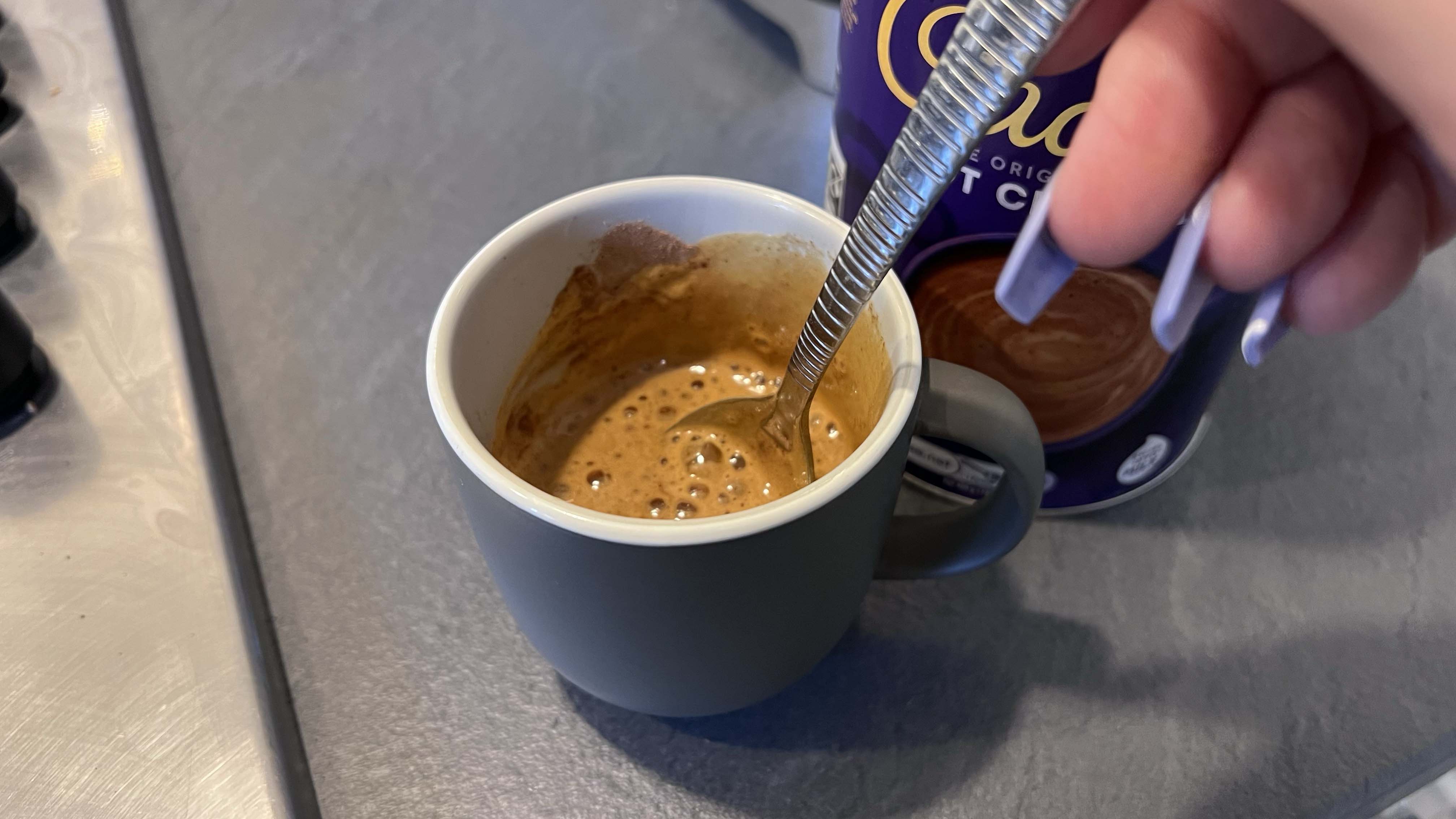
Steam and froth the milk at the same time using your espresso machine's steam wand. Begin by placing the wand at the bottom of the jug to heat the milk, before moving the wand closer to the surface to create the foam.
I've found that if I steam one measure of milk first, before frothing another, I have more control over the foam. However, this is time-consuming and isn't entirely necessary.
The ideal temperature of milk is around 149-158 F / 65-70 C and I recommend buying a pitcher with a built-in temperature gauge, like this $11.99 Milk Frother from Amazon to make this step easier.
When it comes to which milk is best for cappuccino, Skinner explains that the type of milk, whether it's whole milk, oat milk, or anything in between, largely doesn't matter. "What matters is that the milk is fresh. This is because fresh milk contains more protein and it's the protein which determines how frothy it gets."
3. Combine the espresso and milk
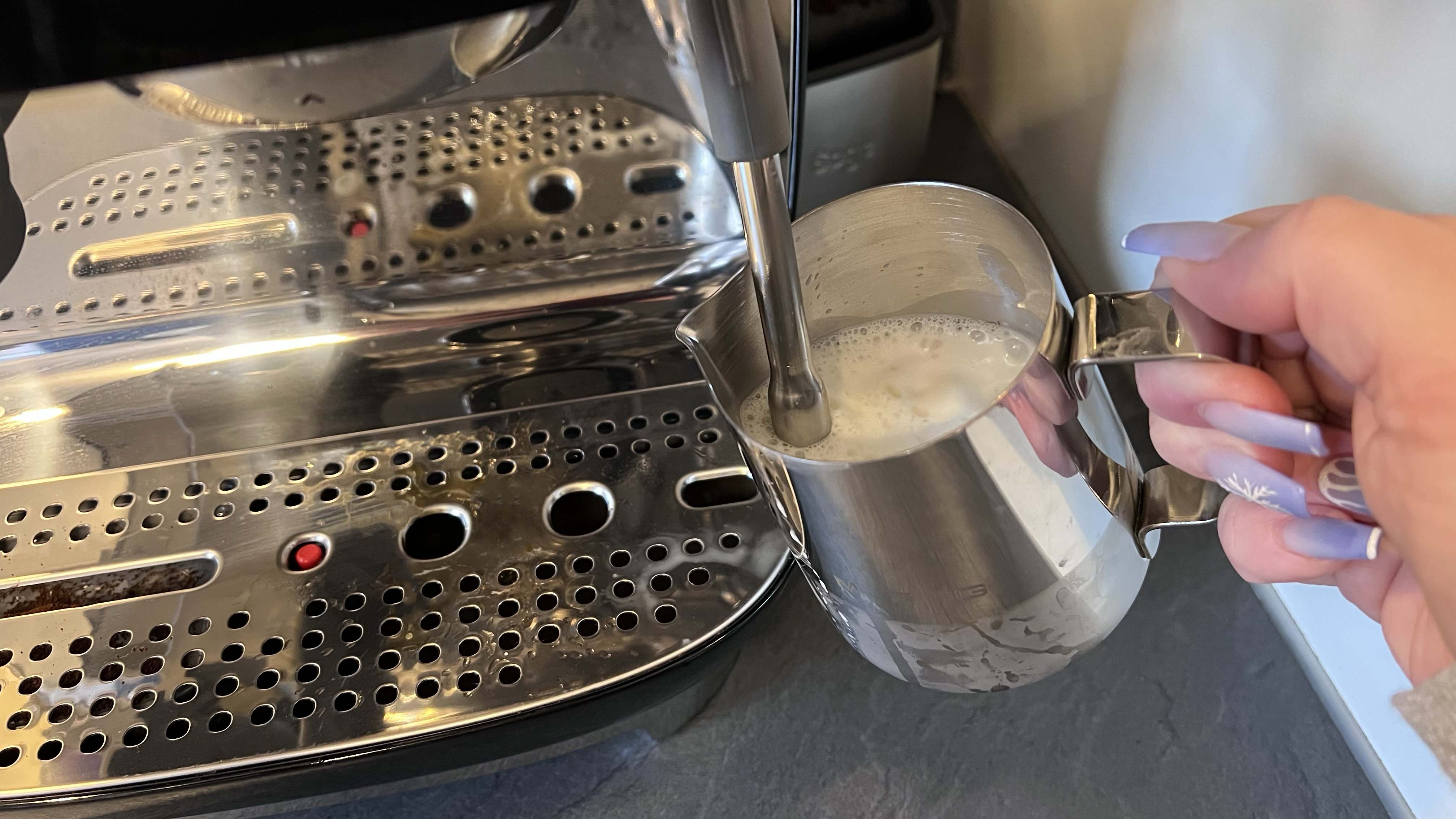
Tip the milk pitcher at an angle and slowly pour the steamed milk into your espresso, leaving enough room for a layer of foam on top. As you get towards the bottom of the jug, angle the pitcher further to add the foam on top.
If you rush this step, the steamed and frothy milk mix together. This will still taste like a cappuccino but the texture won't be the same as what you get in shop.
4. Sprinkle with chocolate powder
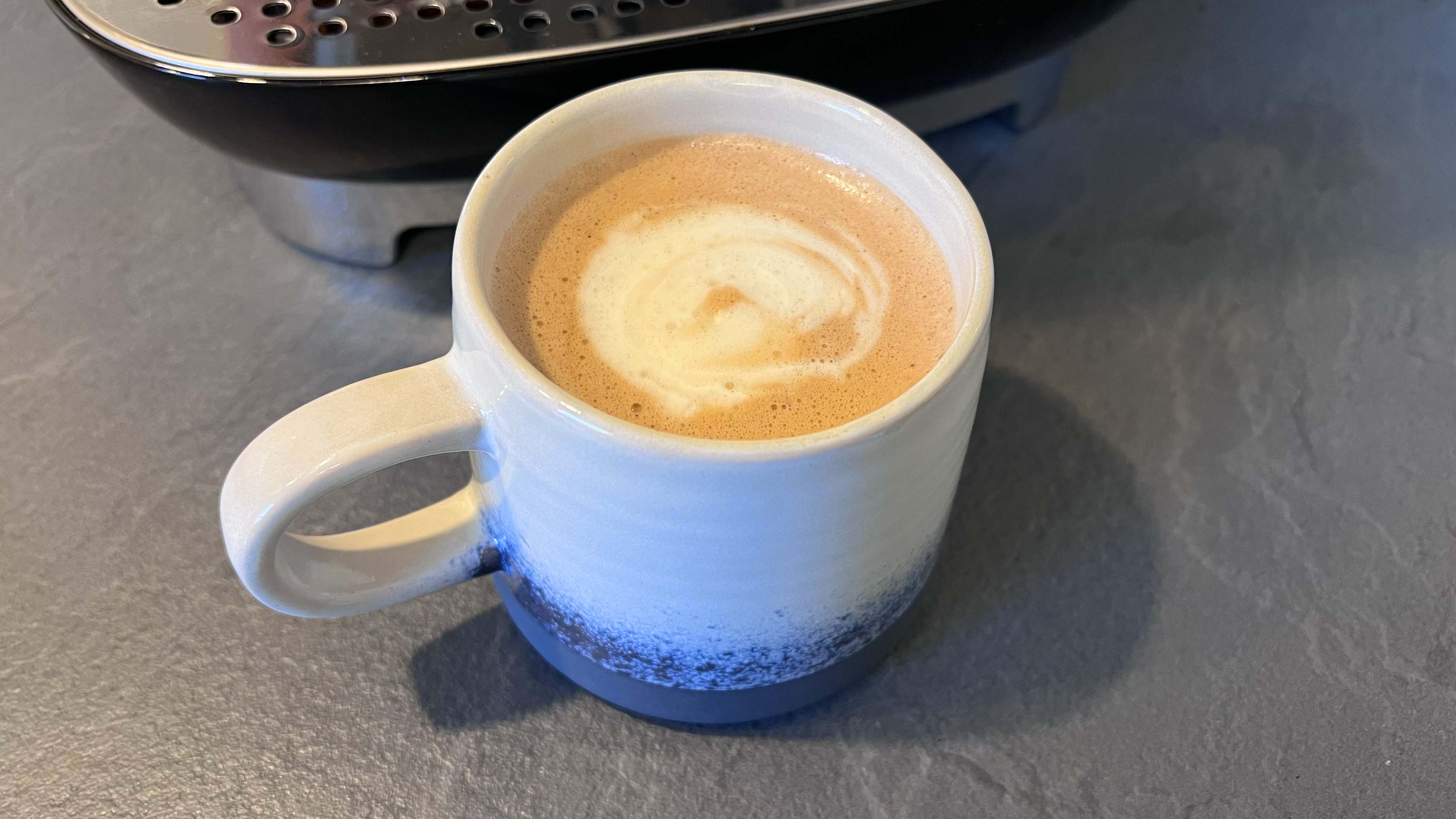
This is an optional step and in addition to making your cappuccino look professional, the chocolate can help add a different flavor. I add Cadbury's hot chocolate powder (Amazon) but it can be quite sweet, so adding cocoa powder is also an option.
FAQs
Cappuccino vs latte: What's the difference?
"The different coffee names refer to their flavor strength, relative to the amount of milk that's added," says Skinner. This ranges from a pure espresso followed by a macchiato, cortado, flat white, cappuccino, and latte.
As a guide, both drinks typically consist of 1/3 espresso and 2/3 milk. However, with a cappuccino, the milk portion is divided between 1/3 steamed milk and 1/3 foam, while a latte is 2/3 steamed milk and a 1cm layer of foam.
This is a guide only because it depends on the amount of espresso you're using. Professional baristas will precisely match the volume of milk and foam to the volume of coffee, so the ratios can differ.
What is a 'dry' cappuccino?
A traditional 'wet' cappuccino blends espresso, steamed milk, and milk foam, typically in equal parts. By comparison, a 'dry' cappuccino reduces the amount of steamed milk while increasing the amount of milk foam.
The reduced steamed milk in a dry cappuccino means that the bitterness of the espresso becomes stronger, while the extra milk foam insulates the drink, keeping it hotter for longer. It also adds a lighter, frothier texture.
Final thoughts
Mastering the art of making a cappuccino at home takes a bit of practice but the reward is worth the effort.
It not only means you can tailor the drink to your taste but it means that on the occasion when you can't, or don't want to, venture to your local coffee shop, you can still get barista-style coffee indoors.






